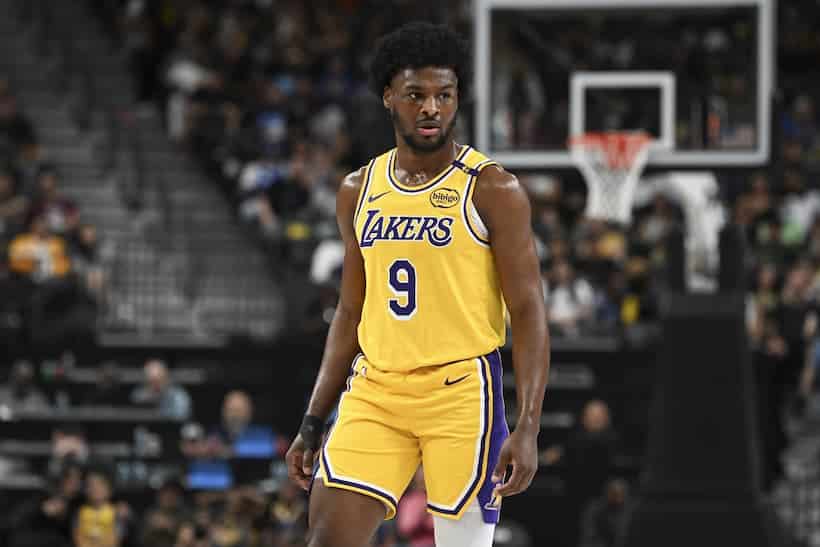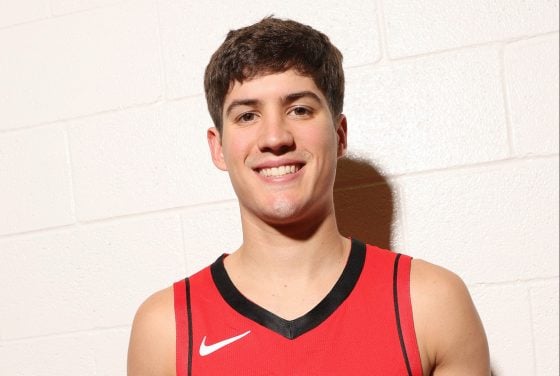Trade season is upon us, the first under the suffocating new regime of the 2023 collective bargaining agreement. Despite the draconian anti-Celtics bias of the new CBA, that doesn’t mean there’s nothing the Celtics can do, but we’ve got some new restrictions to wrestle with as we enter the deadline.
First, we’ll start with a rundown of the trade rules generally (including the new rules), then a discussion of the Celtics’ tradeable assets, and finally a few types of players they could target.
The increasingly complex NBA trade rules
Like Shrek (or an onion), the NBA’s CBA and the rules around trading have layers; seemingly endless amounts of them, but let’s start with the basics. The NBA’s salary cap is a soft cap. In other words, you can go over it (I apologize in advance for the colossal number of times I’m about to say “in other words” in this article). In the Celtics’ case, they are roughly a cool $51.3 million over the cap this season (per Spotrac.com, and really everything in this article per the heroes at Spotrac).
This matters for a few reasons that we will discuss later, but as it specifically relates to trades, being over the cap limits how you can structure deals. In simple terms, teams over the cap have to match the amount of the outgoing salaries (players they are trading) with the incoming salaries (players they are trading for).
It’s not a dollar-for-dollar match, however. Otherwise, it would be basically impossible to trade because you’d be limited to players that have the exact dollar amount of the player you are trading away. Instead, the general rule, and the rule under the previous CBA, is that teams could take back up to 125% of their outgoing salary. Unfortunately, the new CBA has amended this for teams over a certain salary threshold. That threshold is what’s affectionately known as the first apron.
The CBA is designed so that the more amount of money you spend, the more punitive the restrictions. The first threshold is obviously the cap itself. Once you get beyond the soft cap ($136 million). you can’t sign free agents without using an exception. Then you hit the luxury tax threshold ($165 million) where you have to pay the league for each dollar above the tax line. Then you hit the first apron ($172 million) and then the second apron ($183 million). At both aprons, different restrictions apply. We don’t have to worry about which apron each restriction applies because the Celtics are already well past the second apron with total salaries equaling about $187 million, which means every restriction applies.
The most important apron restriction for trade purposes is that the Cs can’t take back 125% of outgoing salary. Instead, they’re limited to 110% (which falls to 100% after July 1st this offseason and will stay at that level into the future).
Let’s look at a simple example. This is blasphemy, but let’s pretend the Celtics are trading Sam Hauser. He makes $1.9 million dollars this year. With Sam’s money outgoing, the Celtics can receive a player making around $2.1 million in a trade. Easy peasy.
Now that we’ve got the basics, let’s take a look at the Celtics tradeable assets.
Brad Stevens’ war chest
First, here are all of the Celtic’s contracts on the books (from Spotrac):
You’ll notice that you can actually cobble together a pretty decent amount of money if you combine a few of the end-of-the-bench guys. If you put JD Walsh, Svi Mykhailiuk, and Lamar Stevens together, you can total roughly $5.16 million of tradeable salary, which means we can take back a player making roughly $5.676 million. Let’s keep that number in mind for section 3.
Before we move on, we need to address the PPP: the Payton Pritchard Problem. Because Pritchard received a rookie extension this offseason, his contract is referred to as a Poison Pill Contract. That sounds way cooler than it is. Long story short, unlike in the Sam Hauser example, Pritchard’s salary counts differently for the Celtics than the team that is receiving him in a trade. His salary to the Celtics is $4 million outgoing, but for the team receiving him, it is $6.8 million incoming (the average of his current salary and all the extension years). It is very tricky to trade Pritchard, but not impossible. It’s made considerably easier to a team with cap space because they can just absorb the extra money and send back the Celtics a player making up to $4.4 million. If you’re lost, that’s ok. The main takeaway is that Pritchard is far less likely to move because of this than some of the other bench players.
Now, onto the draft picks. Or as I like to call it “Brad Stevens’ not-so-secret obsession with second round picks.” The picture is from Fanspo.com
:no_upscale()/cdn.vox-cdn.com/uploads/chorus_asset/file/25246614/Fanspo_picks.png)
This list is actually missing the 2028 1st rounder, which we owe to San Antonio in a swap. But because it’s a swap, we still do own a pick in 2028; it’s just the worst of our 1st or San Antonio’s. But wait, there’s more. The NBA’s Stepien Rule requires that a team have at least one 1st round pick in every other draft. Looking at the Cs’ situation, because we traded our 2029 pick to Portland in the Jrue Holiday trade, the 2028 swap and the 2030 1st are off the table. We also can’t trade two consecutive picks, so we couldn’t package the 2024 and 2025 1sts in a deal. With all that in mind, the Celtics are left with the following tradeable draft assets:
1sts – 2
2nds – 8 (Brad!!!)
Our final “asset” is courtesy of good old friend Grant Williams. That is the $6.2 million Traded Player Exception. Without going into the minutiae of TPEs, its basic function is that it acts as a tradeable salary without requiring you to actually trade a player. In other words, the Celtics can receive any player in the NBA making $6.2 million or less without sending out a player in that trade.
They are exceedingly useful, but there is an important restriction (like everything in the CBA). Unlike player salaries, the TPE can’t be combined with other contracts to take back more salary. For instance, let’s take Sam’s $1.9 million. We couldn’t stack his money with the TPE and take back a player making say $8.0 million. However, if a player does fit into the TPE, we can still send out contracts to cut down the salary we are taking on. So, we could use the TPE on someone making $5.9 million and send out Svi with it to save a bit of money (and a lot of luxury tax). So, whenever the TPE is involved, keep in mind that the player the Celtics are receiving has to make $6.2 million or less.
One other thing to consider: Boston has an open roster spot. That could be used to promote a current two-way player, say Neemias Queta for example. Or, Stevens could decide to make an uneven 3-for-2 or 2-for-1 without having to cut a player.
Let’s sum up what the Celtics have in their arsenal for the deadline (there’s no way they are touching the top-6, so they aren’t included here):
Players
:no_upscale()/cdn.vox-cdn.com/uploads/chorus_asset/file/25246697/Players.jpg)
Draft Picks
1sts – 2
2nds – 8
TPE – $6.2 million
Alright, on to the fun stuff.
A few types of players the Celtics could target
While it’s fun to combine like 5 or 6 salaries and go shopping for some players that make a decent amount of money, that is functionally very difficult. The team receiving them has to either have open roster spots or be willing to cut guys so they can execute the trade. Because of that difficulty, I think it’s far more likely the Cs are shopping for contracts that fit into the TPE. They will almost certainly send out some guys with the TPE, but as a rule of thumb the Celtics are practically limited to players making $6.2 million or less.
We also have to keep in mind players that are poison pilled like Pritchard is. That takes out two of my personal favorite targets Deni Avdija and Isaiah Stewart. But let’s take a look at some guys that are out there.
Bigs
- Nick Richards – Charlotte – $5.0 million
- Mike Muscala – Detroit – $3.5 million
- Xavier Tillman – Memphis – $1.9 million
- Andre Drummond – Chicago – $3.3 million
Wings
- John Konchar – Memphis – $2.4 million
- Julian Champagnie – San Antonio – $3.0 million
- Reggie Bullock – Houston – $2.0 million
- Saddiq Bey – Atlanta – $4.5 million
Guards
- Simone Fontecchio – Utah – $3.0 million
- Dennis Smith, Jr. – Brooklyn – $2.0 million
- Jevon Carter – Chicago – $6.1 million
Not exactly a list of All-Stars, but given the CBA restrictions that the Celtics have to contend with and their top-heavy salary structure, there’s just not a large universe of players the Celtics can target.
With that said, there’s some very interesting players that could definitely sneak into the Celtics’ rotation (Tillman, Bey, and Fontecchio chief among them), and the Cs have enough picks to entice one of these teams to move them. I don’t think the Celtics are going to hit a home run during trade season, but they might just slap a seeing-eye single up the middle.






